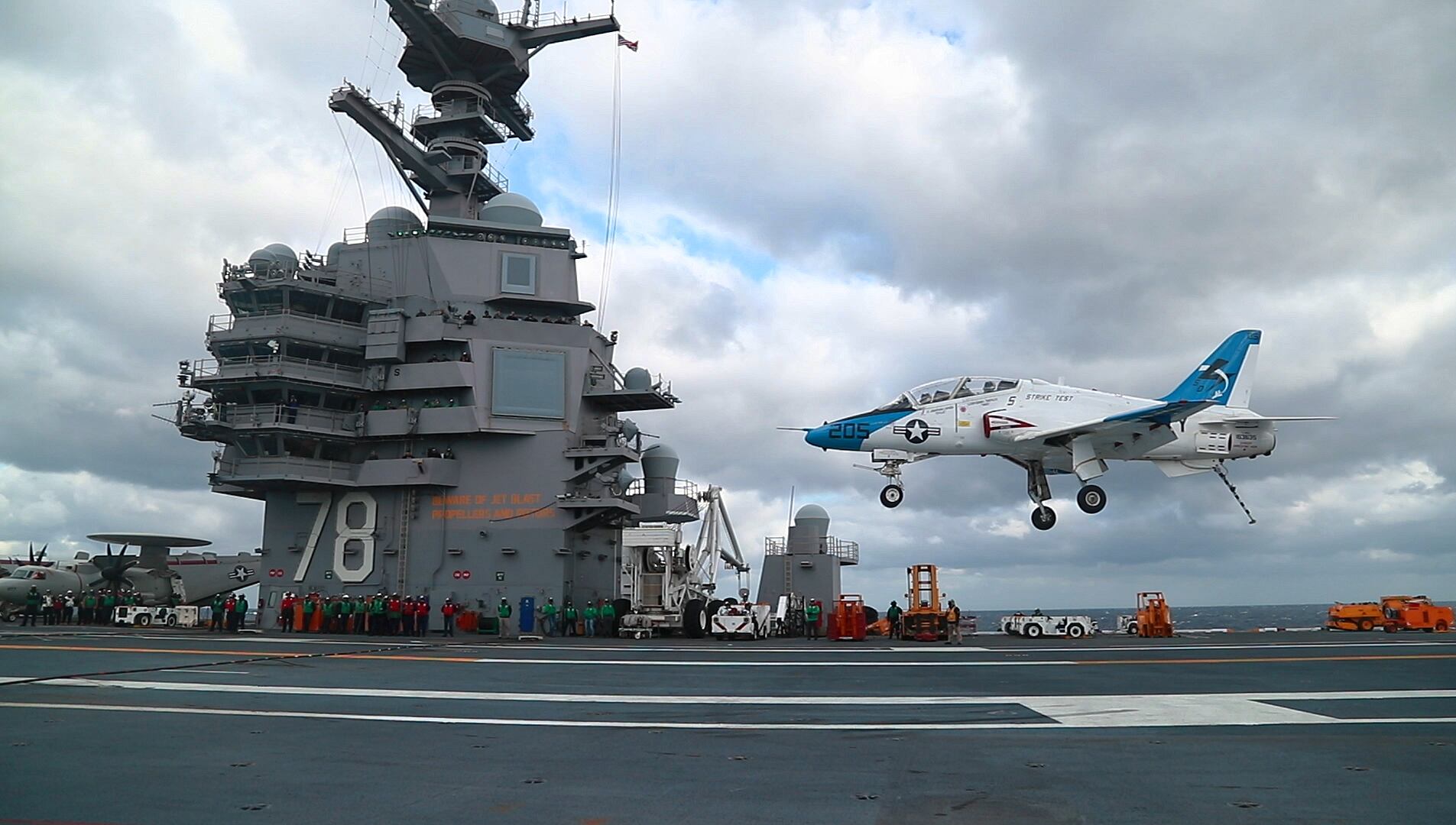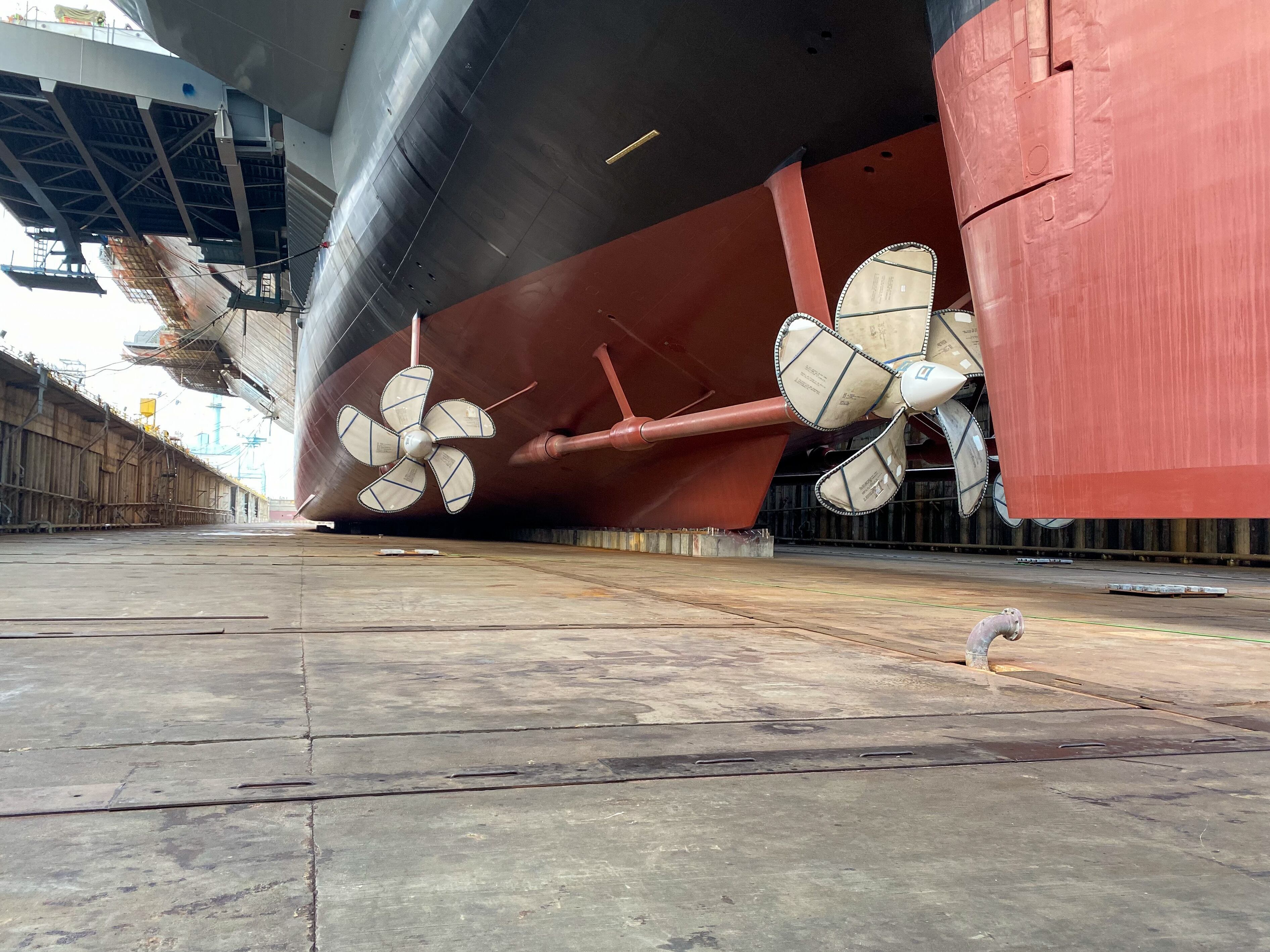WASHINGTON — The U.S. Navy is over the halfway mark in certifying the new aircraft carrier Gerald R. Ford’s 11 advanced weapons elevators, which have been at the center of an ongoing controversy over delays in getting the Navy’s most expensive-ever warship ready for its first deployment.
In a news release Thursday, the Navy announced it had certified Lower Stage Weapons Elevator 1, the sixth certified working elevator. LSWE 1 moves bombs from the forward magazine up to a staging area beneath the flight deck, where the weapons are armed and sent to the upper-stage weapons elevators that go to the flight deck. Crews had already certified the elevator that brings bombs from the aft magazine to the staging area.
The elevators are designed to reduce the time it takes to get bombs armed and to the flight deck to mount on aircraft.
“LSWE 5 has given us the capacity to move ordnance from the aft magazine complex deep in the ship through the carrier to the flight deck with a speed and agility that has never been seen before on any warship,” Rear Adm. James Downey, program executive officer for aircraft carriers, said in a statement. “LSWE 1 doubles-down on that capability and ramps up the velocity of flight deck operations. LSWEs 1 and 5 will now operate in tandem, providing a dramatic capability improvement as we proceed toward full combat system certification aboard Ford.”
RELATED

The remaining five weapons elevators are on track for certification by the time the ship goes to full-ship shock trials in the third quarter of 2021.
The weapons elevators became the center of a firestorm last year and contributed to the firing of former Navy Secretary Richard Spencer.
In January 2019, Spencer announced he’d told the president that if the weapons elevators aren’t functioning by midsummer, then the president should fire him. But within months Spencer had to admit that the weapons elevators would not be finished until the end of 2021 or maybe 2022, which he blamed on Huntington Ingalls Industries for a lack of adequate communication.
Turnover
The Ford has had a witch’s brew of technical problems and delays since construction of the ship began in 2005.
The latest hiccup came in June in the form of a fault in the power supply system to the electromagnetic aircraft launch system, which is replacing the steam catapult system on Nimitz-class carriers. The fault curtailed flight operations on the ship for several days while the crew and contractors tried to identify the issue.
In the wake of that incident, Assistant Secretary of the Navy for Research, Development and Acquisition James Geurts fired Capt. Ron Rutan as Ford’s program manager, citing “performance over time.” Geurts installed Capt. Brian Metcalf as program head.
RELATED

Making the Ford deployment ready was a focus of former acting Navy Secretary Thomas Modly, who likened the ship to an albatross around the Navy’s neck.
“The Ford is something the president cares a lot about, it’s something he talks a lot about, and I think his concerns are justified,” Modly said. “It’s very, very expensive, and it needs to work.
“And there is a trail of tears that explains why we are where we are, but right now we need to fix that ship and make sure it works. There is nothing worse than having a ship like that, our most expensive asset, being out there as a metaphor for why the Navy can’t do anything right.”
Conceived in an era when the Defense Department was looking to make giant steps forward in military technology while it had no direct peer competitors, the lead ship was packed with at least 23 new technologies. Those included a complete redesign of the systems used to arm, launch and recover the ship’s aircraft.
All those systems have, in their turn, caused delays in getting the Navy’s most expensive-ever warship to the fleet, which was originally to have deployed in 2018, but now will likely not deploy until 2023. The Ford cost the Navy roughly $13.3 billion, according to the latest Congressional Research Service report on the topic.
David B. Larter was the naval warfare reporter for Defense News.








